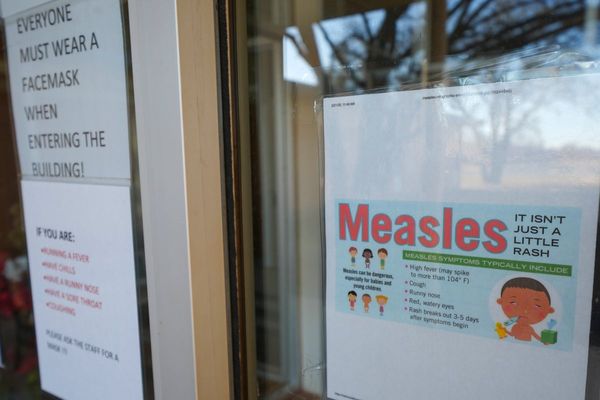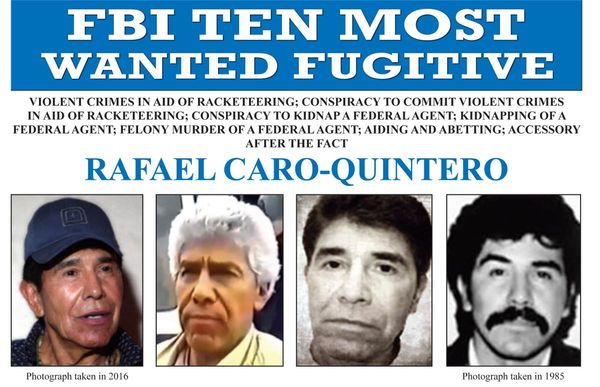
John Hathaway never imagined it’d take this long. But then again, the past eight years have been full of surprises.
When he exited the UFC cage in Macau in March 2014, Hathaway did so swollen with reinvention and improvement on his mind.
A 26-year-old from Brighton, England, pegged by many as the MMA future of his nation, Hathaway in his first UFC main event was knocked out for the first time in his career. An all-time Dong Hyun Kim spinning elbow was the culprit of unconsciousness.
The analysis began. What could he do better? What could he change for next time? All of those questions, however, were pushed to the back burner in the weeks and months that followed.
The holes in his game paled in comparison to an obstacle lurking in the background. He never envisioned a battle with health issues would be his next fight, but it was – and arguably his biggest.
“I thought I was going to be able to fix it quickly,” Hathaway recently told MMA Junkie. “I never thought it’d be eight years plus now. I didn’t think I was going to have all this time out and have to go through these things.”
For approximately 12 years, Hathaway has battled with ulcerative colitis (UC), an inflammatory bowel disease involving the lining of the large intestine. Somehow, not once did he lose hope.
“I kind of withered down over that whole time and lost all my strength and my athletic ability,” Hathaway said. “I’ve just kind of been getting that back over the last two years, really, and I’ve been getting back into combat.”
If you met Hathaway at a coffee shop or the local supermarket, you wouldn’t guess he’s on the heels of a decade filled with a round-robin of medications and three surgeries, but he is. Within seconds of talking to him, you do realize, however, he’s upbeat, positive, cheerful, soft-spoken and polite – perhaps a less shy version of the kid who graced UFC screens years ago.
That could be because there’s more to smile about these days. For the first time in what seems like a lifetime, Hathaway feels good. He feels strong, not depleted. The day finally has come.
Now 34, he’s ready to fight again, which he’ll do Oct. 15 for OKTAGON in Frankfurt, Germany – 3,150 days after he was stunned against “Stun Gun” in Macau.
Fighting gave Hathaway something to push toward, so of course he has to see it through.
“I’ve got to do it – something I’ve wanted to do for eight years,” Hathaway said. “It’s been driving me through. It’s something I’ve always loved doing since I was about 15. It’s been 20 years of just enjoying competing in combat sports.”
Just for Hathaway to get into the cage will be a feat within itself especially after hearing him detail the journey to the finish line.

Hitting the pause button
At the time, Hathaway was 27, nearing 28. For the previous five years he experienced episodes of intense symptoms, which he refers to as “flareups.” The flareups weren’t fun, but he could get through them. They were occasional, not constant.
In 2015, however, the frequency and intensity increased. The final straw came when Hathaway made yet another call to the UFC. He pulled out of the fight – another fight – scheduled vs. Gunnar Nelson in 2015.
Hathaway felt bad physically, of course. But mentally, too, not for himself but for his opponents, rather. Nelson, Matt Brown and Erick Silva comprised the club of fighters he felt he had an unofficial pact with, a code which ulcerative colitis broke.
“‘This is the third person I’ve had to pull out against with three or four weeks left. It’s unfair on them,'” Hathaway remembers thinking to himself.
Looking back, Hathaway said, “It was a nightmare for me, though, back being ill and having to go into the hospital. … It was just the same cycle. It was the third time I hit it and I was like, ‘I can’t keep doing this.’ I was like, ‘I’ve got to figure out something for it.”
The search began for alleviation, whether a cure or a method of keeping things under control. Was it his food? Was it some chemical imbalances? Could it be even be fixed at all? At that time, UC left him with lots of unanswered questions and little answers – but Hathaway kept hope.
“Even for modern day science, they still don’t know fully why it gets triggered and you’ve got to get it into a recession where it’s not active any more,” Hathaway explained.
Hathaway officially put his competitive career on hold – but the fix was far from quick.

Medical wonders
The perplexing expedition to find a solution continued. The weeks piled up, as did the hospital visits and medications. For the typical UC patient, IV treatment precedes oral tablets, a ween-off, and then a revisit back to the hospital for more IV to start the process over again.
For Hathaway, routine treatment didn’t work.
“(Doctors) were like, ‘Because it’s happening more than once, normal medication that’s meant to keep it in remission is not (working).’ What they did was give me immunosuppressants,” Hathaway said. “With Crohn’s (disease) and UC, what you have is your immune system attacking itself. I obviously didn’t want to go on immunosuppressants because I think the idea of them it’s just crazy, anyway. Eventually, I had to go in after putting it off.
“I had a couple of flareups even though I wasn’t in fight camp, taking time off, and trying to fix it through different diets. I tried a Faulkner diet. I tried a more natural way to keep it in remission. I eventually went on to having that again. I never thought I was going to have surgery. Nope, I didn’t want surgery and I didn’t want that.”
He didn’t want it, but one by one alternatives failed until he faced a daunting reality the best option laid under a knife.
“Every hurdle I ended up tackling since then, there’s been something where I’ve been like, ‘I’ll never do that,'” Hathaway said.
Hathaway underwent three surgeries total. Doctors first removed Hathaway’s entire large intestine – all 4.4 pounds of it. Hathaway then lived with a stoma for some time before an internal J-pouch was inserted.
After a few more months of internal healing, Hathaway had everything reattached during a third surgery, a more minor operation, as he described it.
Despite all of the potential deterrents, Hathaway’s drive to return to the cage never faltered. He continued to teach martial arts, improving his knowledge even when he couldn’t improve his physical skills. There were times he’d get down, sure, but the end goal was never in question. Not after two years, not after four, not after six, not after eight.
“The moment we went down the surgery route, I knew I wanted to go back internal so I could go back to competing,” Hathaway said. “… It was constant recycling and it can definitely get frustrating, but I always kind of had that goal of getting back to my normal self at the end of it. I just kept tracking.”
He tracked – and he found.
“I always felt, and I still feel like, I left in a way I don’t want to leave combat sports,” Hathaway said. “I had to pull out just from illness. It doesn’t sit well with me. It’s taken a while for me to get myself back to being able to do everything to the level everything needs to be done at. But I’m back with it now.”

From Octagon to OKTAGON
Since his hiatus, Hathaway’s name has been brought up increasingly less in MMA conversations. Discussions about Hathaway usually ensue after a period of time goes by and people realize he’s still in the UFC’s U.S. Anti-Doping Agency testing pool after all these years.
Unusual circumstances matched by unusual allowances, Hathaway still is signed to the UFC. The promotion is not only allowing, but encouraging, Hathaway to get his fight legs back under him with a few bouts in OKTAGON before a potential UFC return. In the USADA drug testing pool he will remain.
“At least they know I’m still clean,” Hathaway said. “… What (the UFC) want to do is – well, I’ve eight years out. They didn’t know what really to do with me. They were like, ‘Obviously, we don’t feel like we can just stick you back in because we don’t know what your level is now that you’ve had so long out. We’d like you to go and have some competition somewhere else and then we’ll go from there, seeing how you look and perform.’
“I guess if I’m performing and looking good, then they’ll pick me back up. … OKTAGON has been great. They’re giving me the chance. They’ve got some good guys in their welterweight division. I’ll look to compete against them and if I can do well against them, then I’ll step back into the UFC and see what I can do there.”
While he was on the shelf, some of his teammates at London Shootfighters fought dozens of times. Michael Page essentially had his entire career while Hathaway was out with UC. Norbert Noveyni, who was a child when Hathaway last fought, now is a budding Bellator star.
It’s a trip for sure, but Hathaway doesn’t think he’s skipped a beat.
“I’m kind of back with these guys, feeling strong and fit – not kind of withered and dying, basically,” Hathaway said. “It was what I wanted to do. It was the end game. It just took a year and a bit or so to be like, ‘OK, I’m cool. I’m back with these guys. I’m good and everything is still going well.’”
Time has moved on, but Hathaway doesn’t expect to be outdated when it comes time to fight. When he competed, he was dubbed a “new breed” of martial artist, someone who grew up improving in all disciplines. The sport has eradicated the culture of one-discipline fighters, but Hathaway thinks he’s long been ahead of the game.
“I don’t think the game has changed that much – just the general level of everyone is far higher if that makes sense,” Hathaway said. “You had people who were just as good grapplers and strikers back when I was competing and some of them did multiple things. Now, just everyone is better at everything. You’re not going to get anyone who just has glaring holes, like they can’t throw hands or they can’t grapple or they’re no good in certain positions. Everyone can clearly do everything nowadays. The whole bar is just set higher nowadays.”

‘Now is when’
For eight years, Hathaway knew where he wanted to get and now that he’s there, well, he hasn’t really thought too much about where the next road will lead him. Maybe it’ll be competing in the UFC. Maybe it’ll be outside of it.
His internal victory will likely always be his biggest. With the experience under his belt, Hathaway has already met some struggling folks in local coffee shops, and is willing to help more.
“I’m technically cured of it,” Hathaway said. “… But I’m more than happy to help anyone – especially if anyone can draw inspiration from this. They’re welcome to. They can always drop in or message me. … It’s all similar things where I’ve been through it all, so you end up going through the same stuff. Honestly, they get scared because someone mentions surgery.
“I say, ‘It may happen, but it’s not that bad. You’ll get through it. … This is what I went through.’ It just helps to have someone to speak to.”
Those sorts of conversations are rewarding, as are the ones to be had in the coming months with family, friends, training partners and even the mere acquaintances.
“It’s actually going to be quite nice,” Hathaway laughed. “You see all your friends and stuff like that, but also smaller relationships. (Fighting) is the one thing they know about me.”
Relieved, Hathaway is glad he finally gets to answer to everyone’s favorite question of “When?” The answer is the ultimate sign his long road of struggle has come to an end.
“I’ve always liked to be in the dark because I don’t know what my body is going to be like,” Hathaway said. “It’s going to be nice to be like, ‘Yep. This is the date. You can watch it on pay-per-view for OKTAGON or you can go to the event and watch it live.’ … I’ve been wanting to say it. Like, ‘Yeah, I’ll be back eventually. I just don’t know when.’
“Now is when.”







